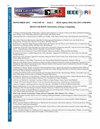A Sustainable Rural Electrification of Morocco Using Stevia Biomass Power Generation: Lessons for Paraguay
IF 1.3
4区 工程技术
Q3 COMPUTER SCIENCE, INFORMATION SYSTEMS
引用次数: 0
Abstract
There is an overreliance of the energy sector of many developed and developing countries on fossil fuels to satisfy their growing energy needs. Paraguay and Morocco are noted to derive the greater share of their energy from fossil fuel imports. However, the high import bills and carbon emissions, as well as the depleting nature of fossil resources have compelled these countries to seek sustainable power sources. Bioenergy from agricultural residues is an example of such sources due to the high agricultural production in Paraguay and Morocco. Therefore, in this study, the potential of electric energy generation from the biomass of three different varieties of Bertoni namely; Gawi, SugHigh3, and Pop in rural regions of Morocco has been analyzed. The analysis showed that the capacity of the electricity generation from stevia biomass for the different regions considered in the study ranged from 421.2 to 16865 W/ha, while the leaf yield and HHV variation for the different varieties ranged between 2.15 t/ha and 7.86 t/ha, and 21.24 MJ/kg and 27.83 MJ/kg, respectively. By considering a 1.66-kW biogas generator with operating hours of 8761 per year and LHV of 26.436 MJ/kg, as well as gasification ratio of 0.7 and 63.1% carbon content for HOMER simulation, a total capacity of 6.64 MW is suggested for installation in Tazuta. The findings indicate that Bertonis dry leaves are excellent biomass resources for energy production in rural regions of Berkane, Larache, Marrakech, Rabat, and Sefrou and they can give us good lessons for rural electrification of Paraguay.利用甜叶菊生物质发电实现摩洛哥可持续农村电气化:巴拉圭的经验教训
许多发达国家和发展中国家的能源部门过度依赖化石燃料来满足日益增长的能源需求。据悉,巴拉圭和摩洛哥的大部分能源来自化石燃料进口。然而,高昂的进口费用和碳排放,以及化石资源日益枯竭的性质,迫使这些国家寻求可持续的电力来源。由于巴拉圭和摩洛哥的农业产量高,从农业残留物中提取生物能源就是此类能源的一个例子。因此,本研究分析了摩洛哥农村地区利用 Gawi、SugHigh3 和 Pop 这三种不同品种的贝尔托尼生物质发电的潜力。分析结果表明,在研究考虑的不同地区,甜叶菊生物质的发电能力在 421.2 到 16865 W/ha 之间,而不同品种的叶片产量和 HHV 变化范围分别在 2.15 吨/公顷和 7.86 吨/公顷之间,以及 21.24 兆焦/千克和 27.83 兆焦/千克之间。考虑到沼气发电机的功率为 1.66 千瓦,每年运行时间为 8761 小时,LHV 为 26.436 兆焦/千克,HOMER 模拟的气化率为 0.7,含碳量为 63.1%,建议在塔祖塔安装总功率为 6.64 兆瓦的沼气发电机。研究结果表明,贝尔托尼斯干叶是伯卡尼、拉腊什、马拉喀什、拉巴特和塞夫鲁等农村地区生产能源的绝佳生物质资源,可为巴拉圭农村电气化提供很好的借鉴。
本文章由计算机程序翻译,如有差异,请以英文原文为准。
求助全文
约1分钟内获得全文
求助全文
来源期刊

IEEE Latin America Transactions
COMPUTER SCIENCE, INFORMATION SYSTEMS-ENGINEERING, ELECTRICAL & ELECTRONIC
CiteScore
3.50
自引率
7.70%
发文量
192
审稿时长
3-8 weeks
期刊介绍:
IEEE Latin America Transactions (IEEE LATAM) is an interdisciplinary journal focused on the dissemination of original and quality research papers / review articles in Spanish and Portuguese of emerging topics in three main areas: Computing, Electric Energy and Electronics. Some of the sub-areas of the journal are, but not limited to: Automatic control, communications, instrumentation, artificial intelligence, power and industrial electronics, fault diagnosis and detection, transportation electrification, internet of things, electrical machines, circuits and systems, biomedicine and biomedical / haptic applications, secure communications, robotics, sensors and actuators, computer networks, smart grids, among others.
 求助内容:
求助内容: 应助结果提醒方式:
应助结果提醒方式:


